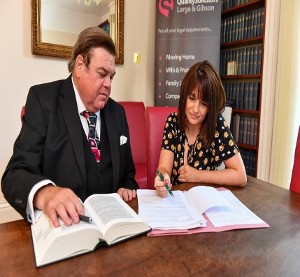From 6th April 2022 there will be major changes to Divorce Law in England and Wales. The existing law governing Divorce dates to 1975. Those that have had to navigate through that system will be aware that it requires one spouse to “blame” the other if they wish to file for divorce within the first 2 years of separation.
There is only one ground for a divorce that the marriage has “irretrievably broken down”. To prove this, one of five facts must be shown. Aside from unreasonable behaviour and adultery, the remainder of these facts rely on a period of separation.

If a couple wishes to divorce without this period of separation, they must rely on either unreasonable behaviour or adultery. This leaves one spouse having to lay blame on the other. For a number of people, their marriage has naturally come to an end and there may be no fault. This would force the spouses into having to blame each other for something that has taken place in the marriage. This creates a hostile start to the divorce process unnecessarily.
As of 6th April 2022, all that will be required to start divorce proceedings is for one or other spouse to file a petition now referred to as an application with a statement confirming that the marriage has irretrievably broken down. This means the end for married or civil partners to find ‘fault’ in relation to the other party.
 It is hoped that the new system will assist in achieving an amicable divorce and reduce any hostility that may be felt between the parties. This reduces the impact that the divorce process can have on any children of the family.
It is hoped that the new system will assist in achieving an amicable divorce and reduce any hostility that may be felt between the parties. This reduces the impact that the divorce process can have on any children of the family.
Under this new “no-fault” system couples may make a joint application to divorce. This is particularly helpful where the couple may have come to a mutual agreement that their marriage is over. This will emphasise their intent to amicably end their marriage.
There is one potential disadvantage to the new system and that divorces could now take longer than under the old system. The new system requires there to be a 20 week “period of reflection” between the issuing of the divorce petition before a conditional order can be applied for. The 6 weeks between the conditional order and Final Divorce Order remains the same as it did between Decree Nisi and Decree Absolute. In effect, the minimum length of time a divorce can take is 26 weeks / 6 months.
Key Changes:
- The facts are removed and so there is no need for blame to be placed on one party.
- The couple can apply for a “Divorce Order” together.
- The petitioner now is referred to as the applicant.
- The Decree Nisi now becomes a Conditional Order.
- The Decree Absolute becomes a Final Divorce Order.
- There is a minimum of 20 weeks that the applicant or applicants must wait at the outset before applying for a Conditional Order.
Factoring in the 6 weeks between Conditional Order and Final Order the minimum length of time a divorce can take is 26 weeks / 6 months.
At QualitySolicitors Large and Gibson, our experienced family law team Peter Dymock and Laura Mailey can help you navigate through both the current system and the new “no-fault” system. Call our team today on 02302 296296 for more information.
